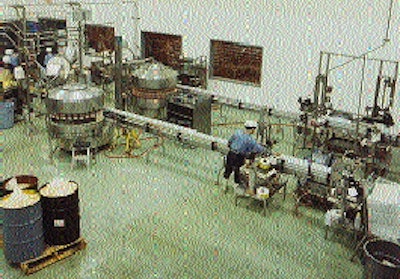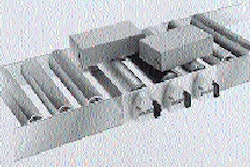
With over thirty varieties of juice in more than five sizes leaving the Azusa, CA, plant, keeping its filling line up and running is crucial to Hansen's Juices success. The company's switch from traditional drop-in conveyor guide rails to an adjustable bracket guide-rail system has simplified size changeover time and increased the company's production. Juice is filled into 8-oz, pint, quart, 1/2-gal and 1-gal bottles, made from a variety of plastic materials, with the number of containers filled being determined by customer orders. Diameters range from 1 1/2" to 6". "Our original guiderail system had stainless steel brackets that required time-consuming set-up and adjustment. Set-up required loosening several nuts and bolts, repositioning rails, and then retightening those nuts and bolts," says Hansen's engineer of plant operations, Chuck Nightengale. Because of the variety requested in customer orders, Hansen's produces its juice in small, 1ꯠ-gal batches. Quick changeover became a major factor in keeping these orders as fresh as possible. Nightengale sought improvement, and found it in Efson's (Wilmington, NC) Trackstar(TM) adjustable guiderail system. The rails fit Hansen's existing conveyors, and reduced changeover to about 1/10th the time needed before. The main reason, says Nightengale, is fasteners that can be tightened by hand, instead of with a wrench. In addition, these rails are made of molded fiberglass reinforced nylon for easy washdown.























